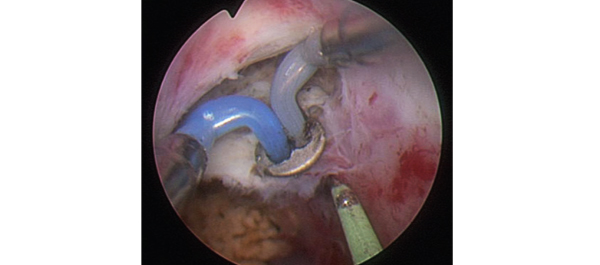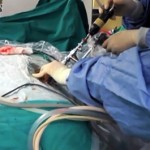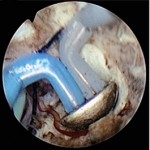Editorial: PCNL tract creation: think plasma vaporization
Surgical planning and access are important factors for successful stone-free outcomes in patients undergoing percutaneous nephrolithotomy (PCNL); however, PCNL has a high risk of haemorrhagic complications (reported transfusion rates of up to 12%), which curtail surgery and result in suboptimum outcomes. Access to the pelvicalyceal system remains the major risk for bleeding, often associated with an off-set tract, splitting of the infundibulum/pelvis and/or angulated sheath, and requiring inordinate torque. The ideal tract dilatation method is still being debated, with differing reports on operating time and blood loss (Urol Int 2003, BJU Int 2005, J Endourol 2008, J Endourol 2011).
The present study evaluates a new method for percutaneous renal access, reporting a shorter operating time, a lower drop in haemoglobin levels and a shorter hospital stay, with no patient requiring transfusion. A patient selection bias might exist, which would explain the low complication rate. Also, the vaporization bubbles and the bleeding could result in difficult views, requiring a high level of expertise in plasma vaporization. The authors did not observe peri-nephric space fluid extravasation or dislodging of the single safety wire. Despite the promising outcome, the reproducibility of this technique remains to be seen, but this is a promising account of reducing bleeding and operating times and maintaining better visualization in PCNL.
Joe Philip
Department of Urology, Southmead Hospital, Westbury-on Trym, and University of Bristol, Bristol, UK




This article by Chiang and Su is an interesting read.
Like all techniques that are against the grain of normal practice, it generates a sense of trepidation and excitement.
I understand from one of our visiting Chinese fellows that it is a well described technique not only in Taiwan but also behind the Great Wall and the urologists use plasma vaporisation to obtain track haemostasis, often leading to a tubeless PCNL.
As a doubting Thomas content in my time tested prone PCNL technique, I worry about the difficulties developing a tract with this technique and the lost nephrons from plasma vaporisation.
The authors suggest a positive note on this account. So, maybe, just maybe it is the way forward………
Interesting paper and great to have the video with it. I would have concerns that vision is an issue as you enter the parenchyma although the authors make it looks easy. Also do you end up making a wider tract than you would otherwise have done as you burrow through into the kidney.
Regardless certainly a novel and interesting technique. I would be interested to know if anyone else has tried this and what they think of it ?
Since our department introducing this bipolar technique, it is easy to learn and successful repeat the procedure by other doctors. Welcome to our institute for further demos.
This article & video have certainly created a buzz
However in the video the guide wire seen looks more like a DJ stent
Also what has been the experience of the author in supracostal punctures
Another thought which came to my mind was, can the tract be created around a guide rod, (to prevent kinking of the guide wire)
We have tried this technique in supine, lateral decubitus and prone position. It did work in any position. A double J stent must be inserted in an antegrade or retrograde manner after the operation to keep the patency of ureter and to prevent the extravasation of fluid after operation. If two-stage PCNL is arranged, a double J stent is inserted. If one stage PCNL is done, a guide wire is placed into the renal pelvis.
Joe Philip: I understand from one of our visiting Chinese fellows that it is a well described technique not only in Taiwan but also behind the Great Wall .
Reply
I presented this technique in the meeting of urolithiasis in Xiaman, China, on Aug. 3, 2012. To the best of my knowledge, the plasma button had never been used for the creation of PCNL tract before this period in China.